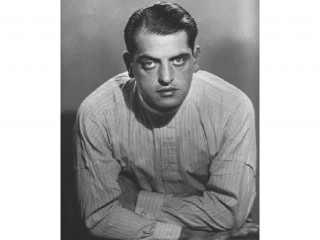
Luis Bunuel biography
Date of birth : 1900-02-22
Date of death : 1983-07-29
Birthplace : Calanda, Aragon, Spain
Nationality : Spanish
Category : Famous Figures
Last modified : 2011-11-21
Credited as : director, filmmaker,
The films of the Spanish director Luis Buñuel emphasize the hypocrisy of conventional morality.
Luis Buñuel was born in Calanda, the first of seven children in a prosperous, landowning family. After being educated by the Jesuits in Saragossa, he studied philosophy and literature at the University of Madrid.
In 1925 Buñuel traveled to Paris, where he came under the influence of the surrealist Andre Breton and the film director Jean Epstein. In 1928 he returned to Spain to collaborate with Salvador Dali on Un Chien Andalou (1928) and L'ege d'or (1929), two innovative surrealist films. The following year Buñuel journeyed to Hollywood. He completed only two short films during the next 10 years: Land without Bread (1932), a realistic study of Spanish provincial poverty, and Madrid 36 to Spain in Arms, a documentary supporting the Loyalist struggle against Franco.
During the early 1940s Buñuel supervised the production of anti-Nazi propaganda films, and in 1946 he wrote the screenplay for The Beast with Five Fingers. He then undertook a series of films set in Mexico. The initial efforts were poorly executed commercial pieces, but Los olvidados (1950), a mordant portrayal of an urchin gang brutalized beyond hope of recovery, was perhaps the first cinematic expression of Buñuel's emotional and intellectual vision.
In 1952 Buñuel directed in English The Adventures of Robinson Crusoe, an imaginative translation of the Defoe classic. The same year El appeared; like several subsequent Buñuel works, this film is a bitter attack on Catholic Spain's sexual mores. After a succession of inconsequential efforts, he produced his first cinematic masterpiece, Nazarin (1958), a lyrically moving, atheistic parable on the impossibility of a modern Christ.
In 1961 Buñuel returned to Spain to produce his most celebrated work, Viridiana. This film contains a detailed foray into the sexual deviations, physical cruelty, and religious psychoses fostered by Spain's repressive and decadent climate. Returning to Mexico, he filmed The Exterminating Angel (1962), a claustrophobic study of the human condition, flawed by occasional philosophical obfuscation and banal use of surrealist elements.
In 1965 Buñuel directed one of his poorest efforts, The Diary of a Chambermaid, and one of his best, Simon of the Desert. The latter is a trenchant analysis of the psychology of sainthood, containing a superb blending of ironic satire with sincere religious feeling. In 1967 he filmed the flawed Belle de jour, a dream fantasy with metaphysical-sexual content. Three years later The Milky Way presented with freshness and charm Buñuel's quintessential statement on the flesh-spirit duality.
Buñuel rang up the curtain on the new decade with Tristana (1970), a film about an unconventional relationship which featured two of his favorite players, Fernando Rey and Catherine Deneuve. It was nominated for an Oscar as Best Foreign Language Film, an honor by which the iconoclastic director declined to be flattered. "Nothing would disgust me more, morally, than receiving an Oscar," he declared. He did win an Academy statuette for his next film, The Discreet Charm of the Bourgeoisie (1972), a charming satire about a dinner party that is ranked among his master works. His follow-up, The Phantom of Liberty (1974) was less well-received, but his final film, That Obscure Object of Desire (1977), a raucous erotic comedy, is one of his most accessible works.
In January 1983, Buñuel received the Grand Cross of Isabel, Spain's highest civilian honor, for his contributions to cinema and for his steadfast opposition to Spanish Fascism. By that time he had lived abroad for almost 40 years, an exile from his homeland. He died on July 29, 1983, shortly before the publication of his autobiography, My Last Sigh.
















